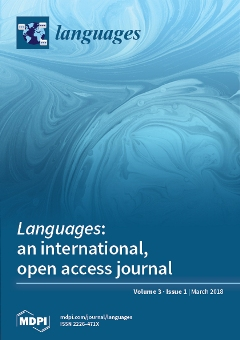This paper analyses the communicative functions of the Gã (Niger–Congo, Kwa branch) clausal connective
nì, roughly corresponding to English ‘and’, drawing on Wilson and Sperber’s (1995; 2004) relevance theory. The study demonstrates that
nì is a conjunction that achieves optimal relevance when
[...] Read more.
This paper analyses the communicative functions of the Gã (Niger–Congo, Kwa branch) clausal connective
nì, roughly corresponding to English ‘and’, drawing on Wilson and Sperber’s (1995; 2004) relevance theory. The study demonstrates that
nì is a conjunction that achieves optimal relevance when the
nì-utterance has cognitive effects that transcend those of the individual conjuncts of
nì. Importantly, the use of
nì leads the way in providing clues that aid the interlocutor to “work out” the nature of the inferential relation between the conjuncts. These inferential relations, including addition, temporality, causality, contrast and parallelism, ultimately enable the interlocutor to arrive at the desired and/or intended interpretation of the utterance as a whole. This paper is, thus, an attempt to account for the meaning of
nì as well as the pragmatic processes that inform the specific inferential relations between the
nì-conjuncts. It also illumines the ways in which pragmatic enrichment and context-dependent inference can strengthen the logical form of clausal coordination in Gã.
Full article





